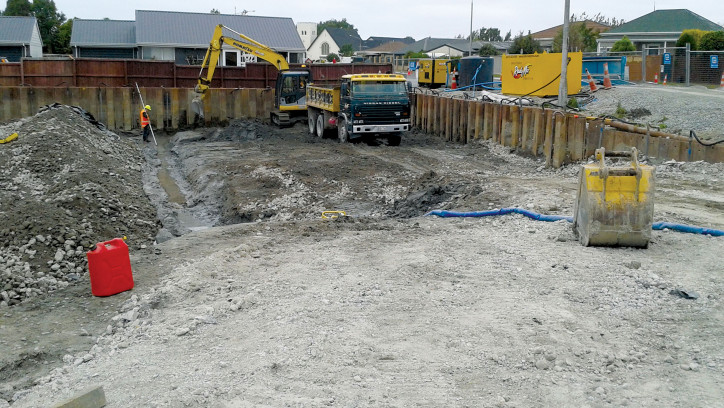Factsheet on specifying residential ground improvement (supporting Module 5A)
Last updated: 4 October 2017

Use this factsheet to understand the key points and benefits of Module 5A, a geotechnical guideline on technical specifications for designing and constructing ground improvement (for liquefaction mitigation purposes).
Who will use Module 5A?
Module 5A: Specification of ground improvement for residential properties in the Canterbury region is aimed at geotechnical professionals working on small-scale ground improvement works which may be required for single-storey residential sites located on land potentially vulnerable to liquefaction.
While the guideline was developed to support work in Canterbury, it should be useful in other parts of New Zealand with similar ground conditions. It might also be a useful resource for projects that are not residential.
Large residential or commercial developments may have different construction requirements not covered by this module.
Benefits of using Module 5A
The ground improvement techniques in Module 5A support methods described in MBIE's Canterbury Residential Guidance for improving ground within technical category three (TC3) sites.
Canterbury Residential Guidance
Benefits of Module 5A include:
- providing guidance for individuals and organisations involved in designing and constructing ground improvement works
- reducing industry costs to design ground improvement works, as standard specifications are available
- reducing construction costs as ground improvement techniques, specifications and materials are standardised
- standardising and improving consistency in ground improvement design and construction
- working alongside MBIE's Canterbury Residential guidance.
Guidance notes within Module 5A should:
- help users understand the principles behind clauses in the specification
- assist contract specification writers in the development of appropriate specifications, depending on the type of ground improvement chosen and the site location.
What you’ll find in Module 5A
The module provides guidance on what to include in a technical contract specification for construction of ground improvement works for liquefaction mitigation purposes. It focuses on the four most common ground improvement methods implemented in residential Canterbury properties.
The four most common ground improvement methods are:
- densified crust - Type G1a (excavate and re-compact) and Type G1d (reinforced crushed gravel raft)
- shallow cement stabilised crust - Types G2a (ex-situ mixing) and G2b (stabilised in-situ mixing)
- stone columns - Type G4 (deep stone columns) and Type G5a (shallow stone columns)
- driven timber poles - Type G5b.
The guideline includes the following sections:
- preliminary and general
- testing (both before and after construction)
- general earthworks
- technical detail for four ground improvement methods
- project specific requirements.